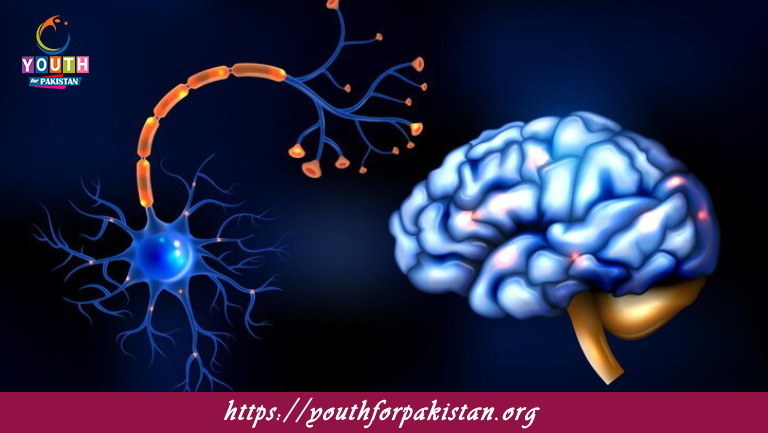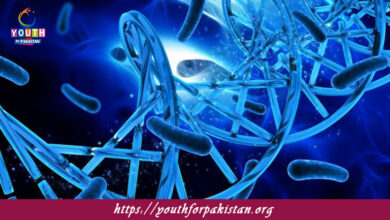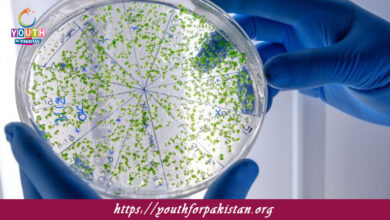Nerve Impulse MDCAT MCQs with Answers

Welcome to the Nerve Impulse MDCAT MCQs with Answers. In this post, we have shared Nerve Impulse Multiple Choice Questions and Answers for PMC MDCAT 2024. Each question in MDCAT Biology offers a chance to enhance your knowledge regarding Nerve Impulse MCQs in this MDCAT Online Test.
What is the primary function of a neuron?
a) Produce hormones
b) Transmit electrical signals
c) Store nutrients
d) Produce energy
What is the term for the electrical charge difference across a neuron’s membrane at rest?
a) Action potential
b) Resting membrane potential
c) Depolarization
d) Hyperpolarization
Which ion is primarily responsible for the depolarization phase of an action potential?
a) Potassium (K⁺)
b) Sodium (Na⁺)
c) Calcium (Ca²⁺)
d) Chloride (Cl⁻)
What happens during the repolarization phase of an action potential?
a) Sodium ions enter the neuron
b) Potassium ions exit the neuron
c) Chloride ions enter the neuron
d) Calcium ions exit the neuron
Which part of the neuron receives incoming signals?
a) Axon
b) Dendrites
c) Axon terminals
d) Myelin sheath
What is the role of the myelin sheath in nerve impulses?
a) Speed up the conduction of action potentials
b) Store neurotransmitters
c) Provide structural support
d) Generate action potentials
Which of the following is a neurotransmitter involved in muscle contraction?
a) Dopamine
b) Serotonin
c) Acetylcholine
d) Norepinephrine
What is the term for the brief period after an action potential during which a neuron cannot fire another action potential?
a) Absolute refractory period
b) Relative refractory period
c) Depolarization
d) Repolarization
Which structure releases neurotransmitters into the synaptic cleft?
a) Dendrites
b) Axon terminals
c) Cell body
d) Nucleus
What is the role of sodium-potassium pumps in neurons?
a) Maintain resting membrane potential
b) Facilitate neurotransmitter release
c) Speed up action potential conduction
d) Repolarize the membrane
Which type of glial cell forms the myelin sheath in the central nervous system?
a) Astrocytes
b) Microglia
c) Oligodendrocytes
d) Schwann cells
What happens at a synapse?
a) Action potentials are generated
b) Neurotransmitters are released
c) Ions are pumped across the membrane
d) Myelin is formed
Which of the following ions are involved in neurotransmitter release?
a) Sodium (Na⁺)
b) Potassium (K⁺)
c) Calcium (Ca²⁺)
d) Magnesium (Mg²⁺)
What does the term “polarization” refer to in a neuron?
a) The process of neurotransmitter release
b) The maintenance of a difference in electrical charge across the membrane
c) The rapid conduction of action potentials
d) The increase in ion concentration inside the cell
Which phase of the action potential is characterized by a rapid influx of sodium ions?
a) Resting phase
b) Depolarization
c) Repolarization
d) Hyperpolarization
What is the primary function of dendrites?
a) Transmit action potentials to other neurons
b) Store neurotransmitters
c) Receive incoming signals from other neurons
d) Form the myelin sheath
Which of the following describes the all-or-nothing principle of action potentials?
a) Action potentials vary in strength based on stimulus intensity
b) Action potentials are always the same strength once they start
c) Action potentials can be partially conducted
d) Action potentials depend on the size of the neuron
What is the function of Schwann cells in the peripheral nervous system?
a) Form the blood-brain barrier
b) Produce cerebrospinal fluid
c) Form the myelin sheath around axons
d) Maintain the blood-brain barrier
What type of receptor is involved in detecting changes in light?
a) Mechanoreceptors
b) Thermoreceptors
c) Photoreceptors
d) Chemoreceptors
Which part of the neuron typically transmits the action potential away from the cell body?
a) Dendrites
b) Axon
c) Axon terminals
d) Myelin sheath
What is the role of the sodium-potassium pump in maintaining the resting membrane potential?
a) It pumps sodium out and potassium into the cell
b) It pumps potassium out and sodium into the cell
c) It pumps calcium out and sodium into the cell
d) It pumps sodium and potassium equally into and out of the cell
What does hyperpolarization mean in a neuron?
a) The membrane potential becomes more negative than the resting potential
b) The membrane potential becomes more positive than the resting potential
c) The neuron becomes depolarized
d) The neuron becomes repolarized
Which ion’s movement is responsible for the repolarization phase of an action potential?
a) Sodium (Na⁺)
b) Calcium (Ca²⁺)
c) Chloride (Cl⁻)
d) Potassium (K⁺)
Which part of the neuron is involved in neurotransmitter release?
a) Dendrites
b) Axon
c) Axon terminals
d) Cell body
What is the role of neurotransmitters in the nervous system?
a) Transmit action potentials directly
b) Convert electrical signals to chemical signals
c) Maintain resting membrane potential
d) Form the myelin sheath
Which glial cell type is responsible for maintaining the blood-brain barrier?
a) Oligodendrocytes
b) Schwann cells
c) Astrocytes
d) Microglia
What happens during the absolute refractory period?
a) The neuron can fire another action potential
b) The neuron cannot fire another action potential
c) The neuron is at resting potential
d) The neuron is in a state of hyperpolarization
Which of the following is true about action potentials?
a) They decrease in strength as they travel along the axon
b) They can vary in strength depending on the stimulus
c) They are always of the same magnitude once initiated
d) They are only generated in the dendrites
What causes the brief period of hyperpolarization following an action potential?
a) Excessive potassium ion efflux
b) Excessive sodium ion influx
c) Influx of calcium ions
d) Eflux of chloride ions
Which of the following is involved in the process of synaptic transmission?
a) Neurotransmitters
b) Myelin sheath
c) Sodium-potassium pump
d) Axon terminals
What does the term “threshold potential” refer to?
a) The potential at which a neuron is at rest
b) The membrane potential required to trigger an action potential
c) The maximum potential during an action potential
d) The potential after repolarization
Which part of the nervous system contains the largest number of action potentials?
a) Central nervous system
b) Peripheral nervous system
c) Autonomic nervous system
d) Somatic nervous system
What is the role of calcium ions in synaptic transmission?
a) Trigger neurotransmitter release
b) Maintain resting membrane potential
c) Repolarize the neuron
d) Generate action potentials
Which type of neuron conducts impulses from sensory receptors to the central nervous system?
a) Motor neurons
b) Interneurons
c) Sensory neurons
d) Efferent neurons
What is the main difference between saltatory conduction and continuous conduction?
a) Saltatory conduction occurs in unmyelinated axons, while continuous conduction occurs in myelinated axons
b) Saltatory conduction involves jumping from node to node, while continuous conduction involves a wave-like propagation
c) Continuous conduction is faster than saltatory conduction
d) Saltatory conduction involves neurotransmitter release, while continuous conduction does not
What is the main function of the axon hillock?
a) Integrate signals from the dendrites
b) Release neurotransmitters
c) Generate action potentials
d) Maintain resting membrane potential
Which part of the neuron is responsible for receiving signals from other neurons?
a) Axon
b) Axon terminals
c) Dendrites
d) Myelin sheath
What happens during the refractory period of a neuron?
a) The neuron is more likely to fire an action potential
b) The neuron is less likely to fire another action potential
c) The neuron is in a state of depolarization
d) The neuron is in a state of hyperpolarization
Which of the following neurotransmitters is involved in mood regulation?
a) Acetylcholine
b) Dopamine
c) Glutamate
d) Norepinephrine
Which structure ensures that action potentials do not travel backward along the axon?
a) Myelin sheath
b) Node of Ranvier
c) Synaptic cleft
d) Refractory period
What happens at the synaptic cleft?
a) Action potentials are generated
b) Electrical impulses are converted to chemical signals
c) Myelin is synthesized
d) Ions are exchanged
What is the function of the axon terminals?
a) Receive signals from other neurons
b) Transmit action potentials to other neurons or effector cells
c) Integrate incoming signals
d) Generate action potentials
Which neurotransmitter is primarily involved in the “fight or flight” response?
a) Acetylcholine
b) Serotonin
c) Norepinephrine
d) GABA
What role do voltage-gated ion channels play in nerve impulses?
a) Maintain resting membrane potential
b) Facilitate the rapid influx and efflux of ions during action potentials
c) Release neurotransmitters
d) Form the myelin sheath
Which of the following describes the process of “saltatory conduction”?
a) Continuous conduction along the entire length of the axon
b) The process by which action potentials jump from node to node along myelinated axons
c) The generation of action potentials in unmyelinated axons
d) The release of neurotransmitters at the axon terminals
If you are interested to enhance your knowledge regarding Physics, Chemistry, Computer, and Biology please click on the link of each category, you will be redirected to dedicated website for each category.





